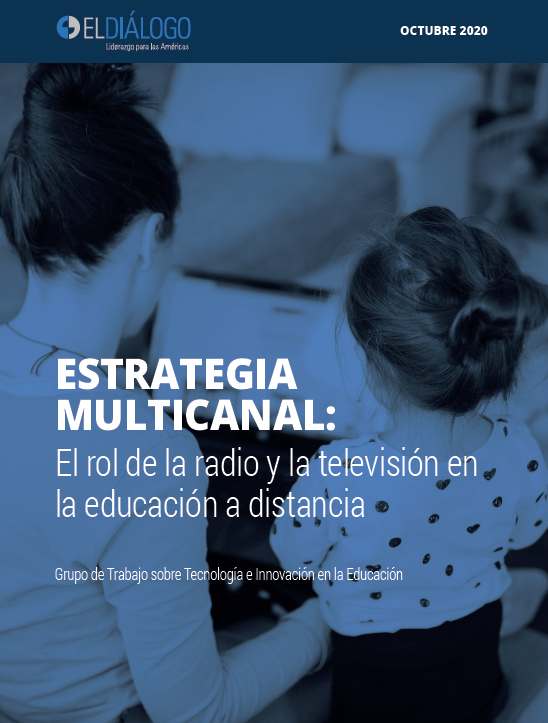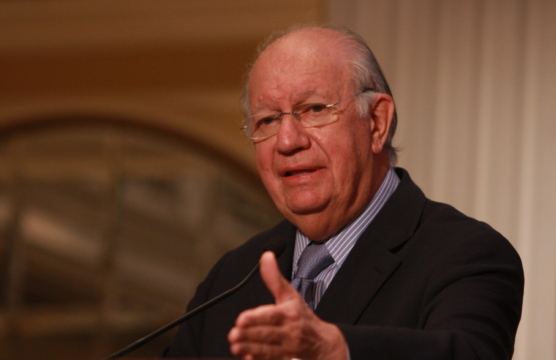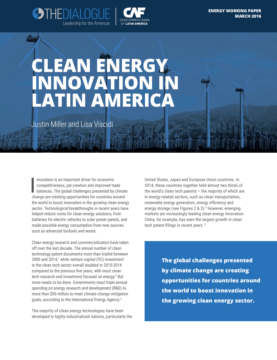Industrial Policy & Innovation in Brazil
Despite an increased presence in the global market, Brazil’s new economic policy shows sign of protectionism and defense of traditional industries.
This post is also available in: Español
The following report is only available in Spanish.
The Covid-19 crisis has forced countries across the region to accelerate the incorporation of technology into education on a previously unimaginable scale. On September 16, 2020, the Working Group on Technology and Innovation in Education met to discuss how to incorporate first generation technologies in their education technology strategies, alongside online platforms, to respond to educational needs during and beyond the Covid-19 crisis.
Due to the conditions created by the pandemic, governments in the region were forced to expand the use of first generation technologies such as TV and radio that were previously being used only to a limited extent in the school environment, as well as to accelerate the use of online platforms and computer technology on a large scale. With today's level of connectivity, a strategy that relies solely on high speed internet access is not sufficient to maintain the connection between students and their educational systems. The meeting revealed that, beyond their immediate emergency deployment, first generation technologies can a have long-term purpose within an effective multi-channel strategy. Radio and television have already been successfully employed for education purposes in recent decades (see Appendixes A and B) and the lessons from these experiences serve to identify potential issues that need to be addressed.
This report presents several initiatives implemented in the region to address the main challenges that countries face in effectively incorporating first generation technologies within their education technology landscapes. The following are three key strategic areas to be strengthened in the implementation of a multi-channel strategies in the context of the pandemic and in the future.
Audience, channel use, and pedagogical approach: Although one of the objectives of the use of TV and radio is to expand coverage in contexts without access to connectivity, the approach to content on these channels must be articulated within an educational strategy for all students. In order to achieve a comprehensive use of first-generation channels in the long term, it is important to (a) develop a transmedia narrative grounded in students' cultural tendencies, without making an outdated use of the channels; (b) strike a balance between edutainment and curricular demands; and (c) articulate a coherent strategy that includes the use of radio and television content as transmedia resources (audio or video, on TV, radio, or streaming) in the long term.
Partnerships, funding, and key players: A key aspect of multi-channel strategies is partnerships among the various actors involved in the creation, production, and broadcast of radio and television programming, as well as funding to support them. Within this framework, there are three needs: (a) strengthening public-private partnerships, (b) developing accessible funding models and payment plans, and (c) promoting a change in culture regarding the role and purpose of first generation media programming.
The role of teachers and content- and learning-based assessment: Because the implementation of a multi-channel strategy is an iterative process, teachers need information about the performance and needs of their students to adjust their teaching methods and their approach to various channels. Implementing an effective teaching model within a multi-channel strategy requires (a) redefining the role of teachers and strengthening links between teachers, students and caregivers, and (b) a systemic effort for teacher training. To develop an effective evaluation strategy, it is necessary to have real-time information and new instruments, as well as tools to evaluate learning.
Despite an increased presence in the global market, Brazil’s new economic policy shows sign of protectionism and defense of traditional industries.
Latin America inequality gap, economic integration, and infrastructure and education systems were among the issues spotlighted at the XVII Annual CAF Conference.
In the wake of the COP21 global climate talks, governments must shift attention to how they will actually follow through on the commitments made in Paris. One concept is central to achieving that goal – innovation.
 Nenad Stojkovic / Mom teaches daughter for work on laptop / Flickr / CC BY 2.0
Nenad Stojkovic / Mom teaches daughter for work on laptop / Flickr / CC BY 2.0

 Video
Video